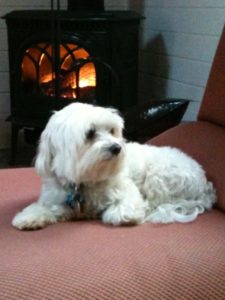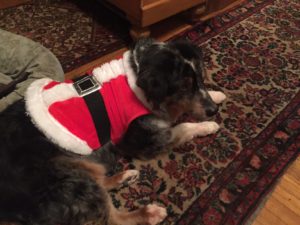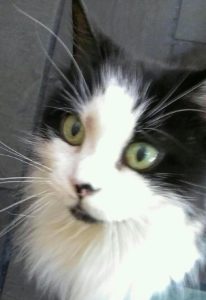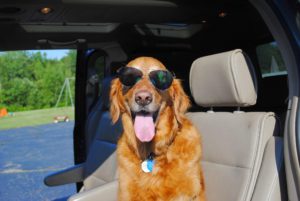When we talk about, and practice, hospice medicine and palliative care, the primary focus is on maintaining a good quality of life for our patients. When I talk to my clients and ask them what their goals are for their pet, while the exact details may vary, this is almost always listed as their top priority. But it does raise the question of what, exactly ‘quality of life’ is, and how we maintain it.
So often, quality of life is defined by the absence of things – absence of pain, absence of hunger, absence of fear, absence of discomfort or distress. Because of this, measures to support quality of life are often investigated and implemented by finding things that could potentially cause a pet to suffer these unpleasant conditions and removing or preventing them.
-I don’t want my dog to be in pain, so I won’t take her on walks.
-I don’t want my cat to have an upset stomach, so I can’t feed him this food or these treats.
-I don’t want my pet to be afraid, so I can’t leave them home alone.
-I don’t want my pet to injure themselves given their poor vision or mobility, so I can’t let them have free roam of the house.
-My pet gets short of breath easily, so I can’t go running with her anymore.
And these are all important things to pay attention to, absolutely. But in a phase of life that already lends itself to a negative mindset, focusing on subtracting and taking things away – on what you and your pet *can’t* do anymore – can lead to an even more intense focus on negativity, pessimism, and loss. It can become a daily reminder of what you and your pet used to have, but can no longer share.
Instead, or in addition, we need to find ways to reframe quality-of-life as a presence of positive factors. While we can improve a pet’s well-being by removing suffering, we can also improve it even further by adding joy. One of the best ways to do this, and one of the most uplifting ways to improve quality of life for both pets and their caregivers, is to think of what your pet loves and work with your veterinary team to find ways to continue including that in their life – or if you’ve been unable to do so, to reintroduce it.
-If your dog loves going for walks but gets painful or tired, can you drive them to their favorite park instead of walking there? Shorter walks, or walks over flat terrain instead of hilly, can also help. Small or toy dogs can also enjoy walks in a stroller.
-If your dog loves sniffing things but can’t walk far, can you ask friends with pets to bring their dogs to your neighborhood, so your pet can then have a short “sniff walk” around the area?
-If your cat loves sitting in high places but can’t jump, ramps or stairs can help them get to their favorite positions.
-If your pet used to love to chase toys but can’t run anymore, toys can be slowly rolled to them, or tossed gently a short distance.
-If your pet loves spending time with family but is limited in where they have access for any reason, can you either move family time to a place that’s safe for them or revise the family space to make it more pet-safe? Baby gates, play mats, and puppy pads can be very helpful for this.
-If you cat loves napping in sunbeams but can’t reach their favorite window seat anymore, bright lamps can create a warm, “sunny” spot for them.
There are as many solutions as there are pets and families – it may require a little bit of creativity and ingenuity, but ultimately focusing on how you can add things to make your pet happier instead of limiting yourself to just eliminating sources of suffering can both improve their quality of life beyond just ‘not suffering’ and help sustain your bond with them by finding ways that you can continue to share time and favorite activities, even as they age or face chronic illness.







 bed”! She loved playing hide and seek! We have so many loving memories. I could go on and on but…
bed”! She loved playing hide and seek! We have so many loving memories. I could go on and on but… lks took him and his Golden “sister” Kara through the town square with stops at the library, church, banks, real estate office, coffee shop, and ice cream shop to say Hi to friends. He marched in Little League parades and performed in the dog show at the local summer festival. He especially loved running on the beach, chasing seagulls. He was really fast, even as he got older. People would just stop and watch him. His speed was impressive. Everyone loved Buddy and he loved everyone! And he so loved his family. He knew each of us by name and was always happy and excited to see us…even if we just went to check the mailbox. He really was loyal and faithful, true to his name.
lks took him and his Golden “sister” Kara through the town square with stops at the library, church, banks, real estate office, coffee shop, and ice cream shop to say Hi to friends. He marched in Little League parades and performed in the dog show at the local summer festival. He especially loved running on the beach, chasing seagulls. He was really fast, even as he got older. People would just stop and watch him. His speed was impressive. Everyone loved Buddy and he loved everyone! And he so loved his family. He knew each of us by name and was always happy and excited to see us…even if we just went to check the mailbox. He really was loyal and faithful, true to his name.